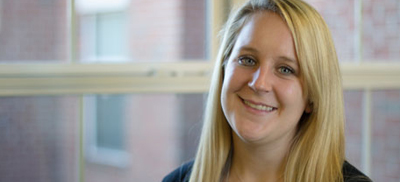Introduction to STEM
According to livescience.com, “STEM is a curriculum based on the idea of educating students in four specific disciplines — science, technology, engineering and mathematics — in an interdisciplinary and applied approach.” In basic terms, it means these four areas are taught in a manner that combines each one, to better equip students with the knowledge and skills needed to thrive in a career in science, technology, engineering, and math (STEM). A big component of preparing students for STEM education is the educators themselves, as they are the ones presenting the information to the students in a meaningful and effective way. Careers in STEM are constantly becoming available due to the innovations in technology and within tech-related companies. To ensure success in a STEM related career, students and educators must work together so that material is presented and understood in a manner that can be applied to real-life experiences.
The Role of Educators in STEM
Within the classroom, it is the responsibility of the educator to cover all the necessary material. Educators play an integral role in the process of student learning, because they act as a knowledgeable medium between the student and subject matter. In the situation that students are unsure of how to solve a problem or tackle an assignment, the educator is there to act as a guide. It is important that educators are constantly up-to-date with STEM trends and technological changes in order to teach students the knowledge required to thrive in an evolving field. Aside from guiding students, STEM educators are also responsible for introducing them to real-life applications of classroom concepts. Because STEM principles are applicable to many fields and industries across the world, there is no shortage of places to go for field trips. One such dedicated STEM field trip destination is iFly; an indoor skydiving company that provides a program developed by STEM teachers and professionals specifically for students. According to the iFly website, “The STEM Education program at iFLY uses iFLY’s unique vertical wind tunnel facility to make STEM exciting, relevant, and accessible to all students.” Educators in STEM are able to reinforce practical application of classroom concepts through opportunities such as these.
Careers in STEM
Once formal education is complete, the journey does not stop there. Students must then use the skills and knowledge acquired in and out of the classroom to embark on a fulfilling career path. There is currently an abundance of career opportunities in STEM, according to a recent article in The Denver Post, Colorado alone has, “15.3 job openings for every unemployed STEM worker in 2016.” The article then relates this ratio to the rest of the country, stating that it, “Nationally translates into a shortfall of 3 million STEM workers.” By providing students a quality education in STEM subjects and exposing them to real world uses, they may be more apt to maintain interest in the field. Currently, there is a lack of women in high paying jobs within STEM related careers. Per a recent USA today article, “The continued absence of women in top-paying jobs comes at a time when the tech industry is growing at a breakneck pace — so much so, it can’t fill job openings fast enough. A report issued Monday by CompTIA, a technology organization, revealed 627,000 unfilled tech jobs as of the fourth quarter.” The article also mentions the lack of many women of color as well. To combat such disparities, there are several organizations and initiatives, such as the Woman of Color STEM Entrepreneurship conference which is held by Arizona State University. According to the conference website, the conference is in place to support and encourage more women of color to get involved in entrepreneurship experiences as well as small business ventures. They also seek to improve the way that entrepreneurship is presented and experienced in higher education. By teaching STEM subjects in an immersive and practical way, educators are inspiring and motivating future leaders in the field.
Master of Arts in Teaching at Stevenson
Stevenson University offers a Master of Arts in Teaching designed for math and science baccalaureate degree graduates who have a desire to teach and a passion for inspiring a new generation of learners. In addition to a master’s degree, there is also the option to earn a Post-Baccalaureate Certificate in Secondary STEM Teaching & Learning. By becoming an educator in STEM, the opportunity to empower learners and prepare them for a STEM career presents itself.






